WEEK COMMENCING 13 May 2019
The removed parts from the front of the tender are being cleaned and descaled. These parts include the coal door and gate. At the back of the tender tank the new shim plate that runs across the rear flange of the tank and the vestibule door plate are now painted. Work has started on grinding the screw heads flush with the tender plate work and preparation for painting begun with the application of filler. At the bottom of the vestibule flange where the bellows are fastened the plate has worn very this so new plate was welded in this week.


At the front of the tank a supporting beam has been welded across the tender just behind the tender front. This will keep the tender sides in place when the complete tender front is removed. More work has been done in removing the plate. We had hoped to have a clean cut line at handbrake shelf height but the shelf behind the handbrake has been found to be holed so this will require repair. The last corridor roof section that joins to the tender front received some fitting this week.
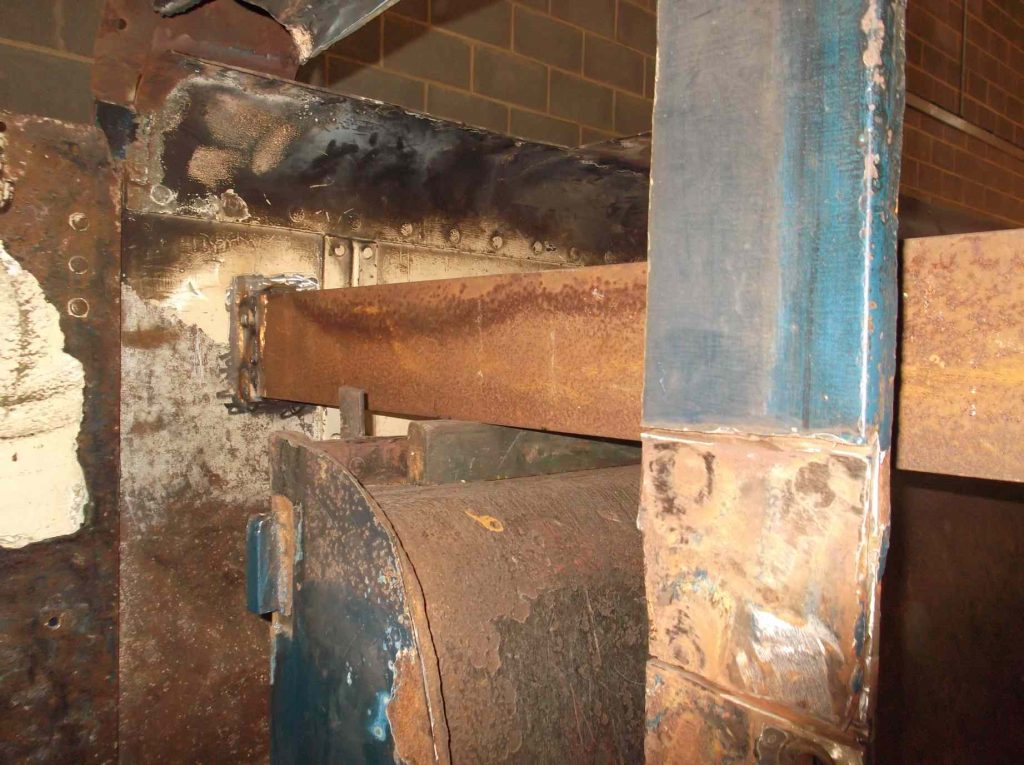
Work continued on the installation of the GSMR and AWS/TPWS charging systems, and the protective circuits that will allow its fitting and enable the option of remote charging. The GSMR equipment has been removed from the tender locker and the locker will be refurbished.
The last bushes to go in the top hanger holes in the tender frames are now complete. The pins have been tried in and they go in straight and are a good fit, justifying the work involved in boring through over the previous few weeks. The tender brakeshaft position was adjusted and the position of the end brackets noted. New bushes will be fitted to the end brackets and they will then be bored to give the correct alignment. Material has been obtained for the bushes and they are in the process of being machined.
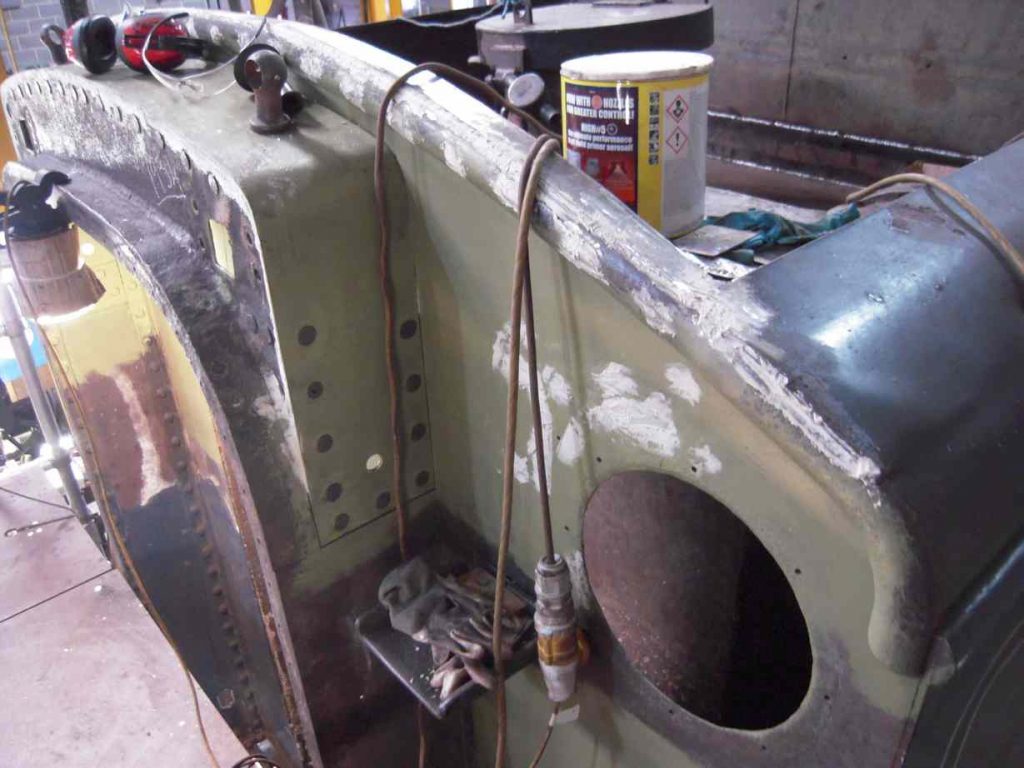
Also at the rear of the tender frames the steps have been put back on with their associated brackets. One required straightening out as it has received a substantial bend at sometime. Putting these components back has allowed the pipe-fitting team to firm up the arrangement of the water filler pipes that pass from outside of the frames and up through the trailing dragbox.
The sample repair to the tender spring hangers has been satisfactorily completed, so the remaining hangers have now been delivered to contractors for specialist repair. The rectified tender bearing brass has been collected from contractors while the trailing set were delivered to them. The left leading brass has been tried in its axlebox and after a little dressing of corners gave the correct movement in the axlebox. The right axlebox brass is being scraped to its journal.
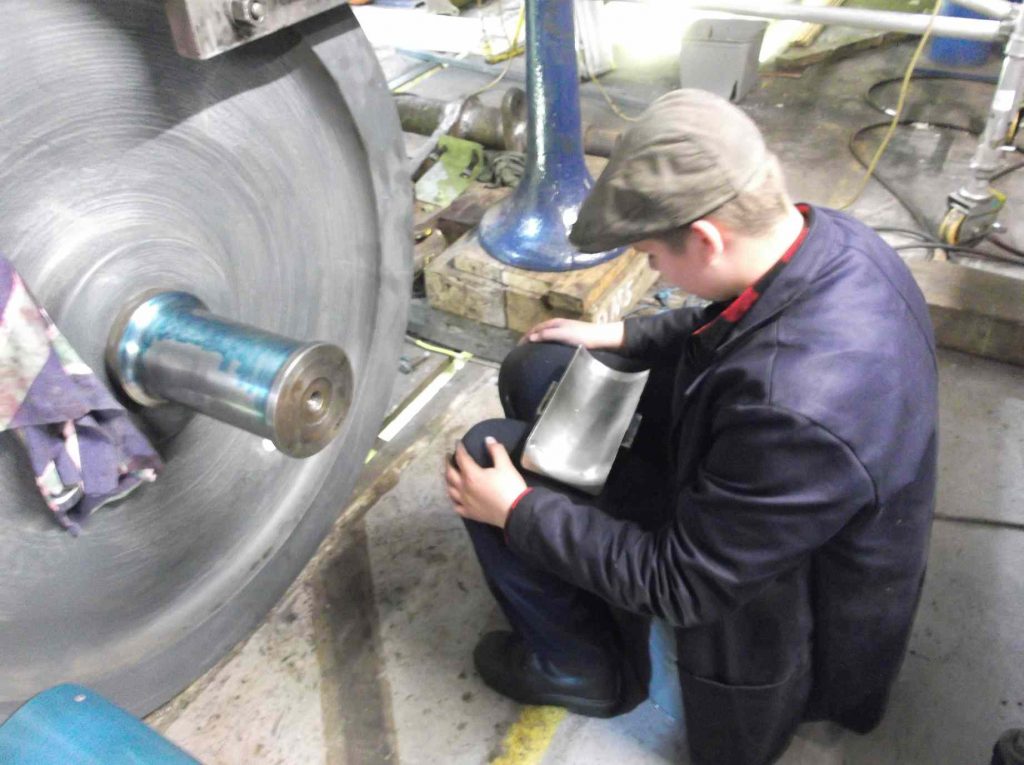
Scraping bearings can be time consuming and we can reduce this time the closer we can get the initial machining to the final profile we want. The risk is if we machine too much material there will not be sufficient to scrape away. In discussions with our contractors they have suggested that we make a profile plate to suit the individual journals which they can then use to make a tool for finishing the bearing while on the machine, still allowing a scraping allowance, but much closer to the final profile than using a single radius tool. A start was made on making the profile plates this week.
All the tender hornstays are now reamed and are ready for new bolts.
The blast pipe casting was moved last week in to a bit of space so that it can be worked on. This week the removal of the blast pipe tops was completed. These will be replaced. Work will continue of recovering the fastening holes in the blastpipe and removing the carbon inside.

A start was made in fitting the new slidebar bolting this week, it is planned to make a blank to enable us to size the bolt hole diameters accurately without the need to machine and fit each bolt individually. This should reduce the amount of machine time needed for finishing the bolts.
Work on the middle crankpin continued this week, making a start on restoring the fillet curve between the crankpin parallel section and the where the pin enters the crank web. Meanwhile the in-house NDT of the middle connecting rod has been completed with examination of the strap. The strap will now be subjected to 3rd party specialist examination.

WEEKs COMMENCING 20 and 27 May 2019
Much time has been spent on the back of the tender in filling and sanding. At the front of the tender more material has been cut out. The coal door frame has been removed and separated from scrap pieces of tender front and has had all its rivets removed. The strap put on when the front of the tender had it’s height increased to match the A4 cab profile has also been removed, and will be refitted after the new tender front platework is installed.
Work continues on the refurbishment of the tender front locker that was adapted to house the GSMR radio unit.
The lower tender vestibule support rods have now been machined to size after being rebuilt with weld. Work will now proceed on recovering the bufferbeam housings to be a good fit on the rods.
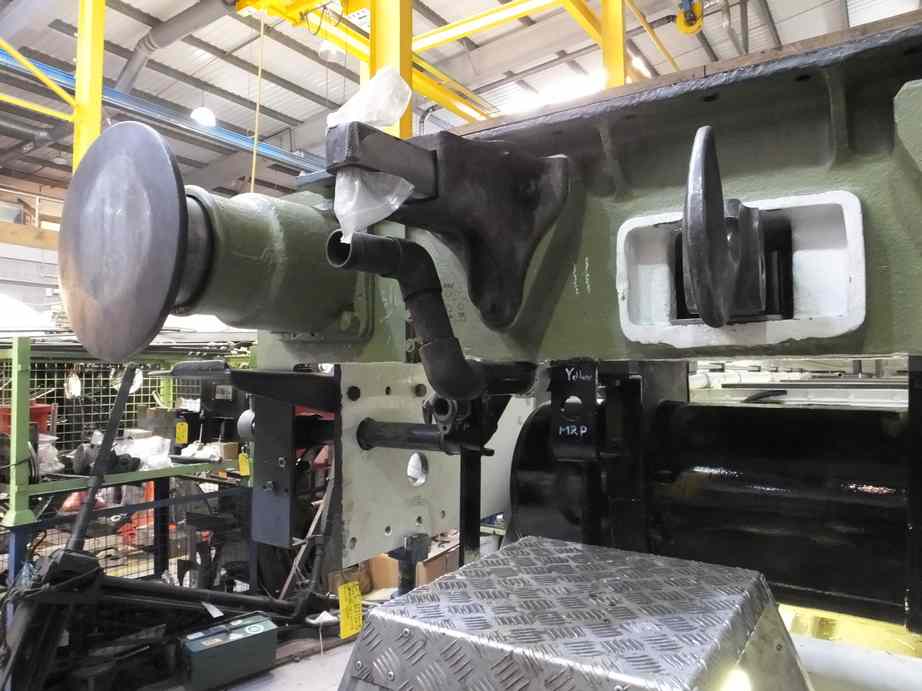
The sections of new steel in the vestibule bellows flange have now had their welds ground flush and attachment holes drilled through.
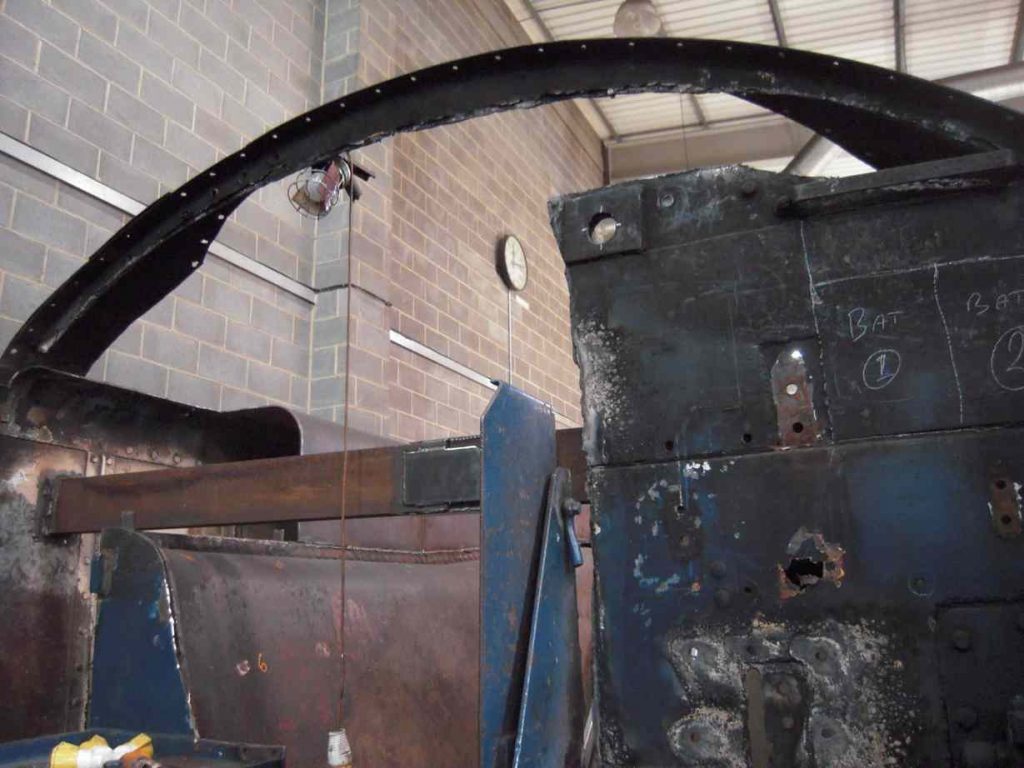
Work on the pipe system continues with the routing the water filler pipes through the frames and trailing dragbox. Work also progresses on routing the large air pipe through the frames that goes to the tender top air tanks. Work has started on the manufacture of new pipe ends for the atomisers.
The leading set of tender brasses have now been scraped in. The leading set of axleboxes are now fitted to the leading wheelset and are ready for trying in the frames. This has involved moving the jacks at the front of the tender frames which were moved back to allow the trial fitting of the re-bushed tender brake shaft assembly.
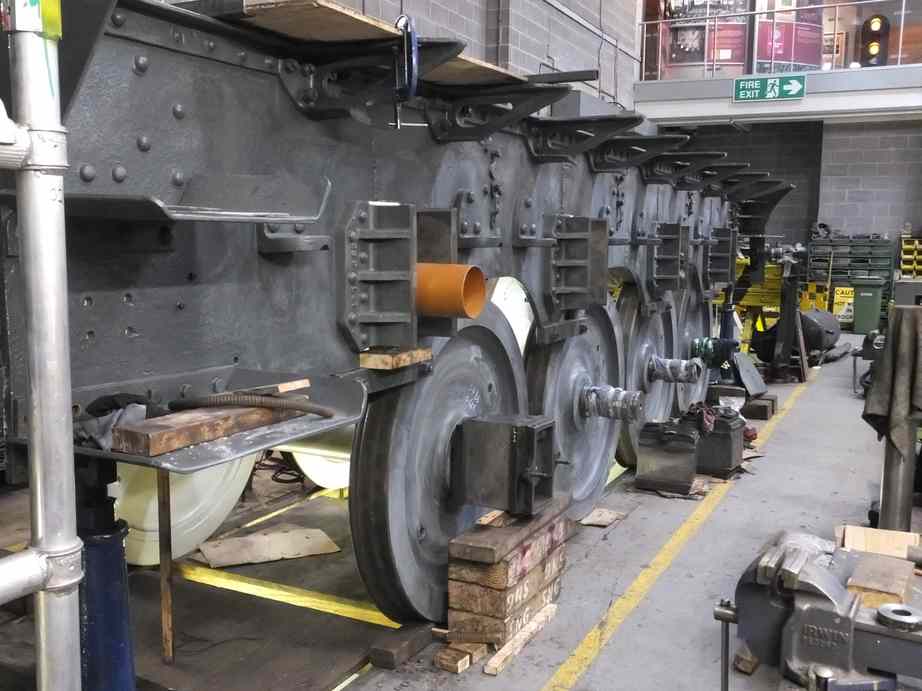
The trailing tender brasses have been white-metalled and are now being machined. The end radii being machined to gauges made by a member of the Engineering Team.
The bushes in the tender brake shaft end brackets were machined and fitted. The assembly was tried in place with some final adjustments being made. The assembly is satisfactory and new bolts are now on order for final fitting. The old bushes have been removed from the long pull rods that couple the lower ends of the tender brake hangers and new material to manufacture new bushes is awaiting collection.
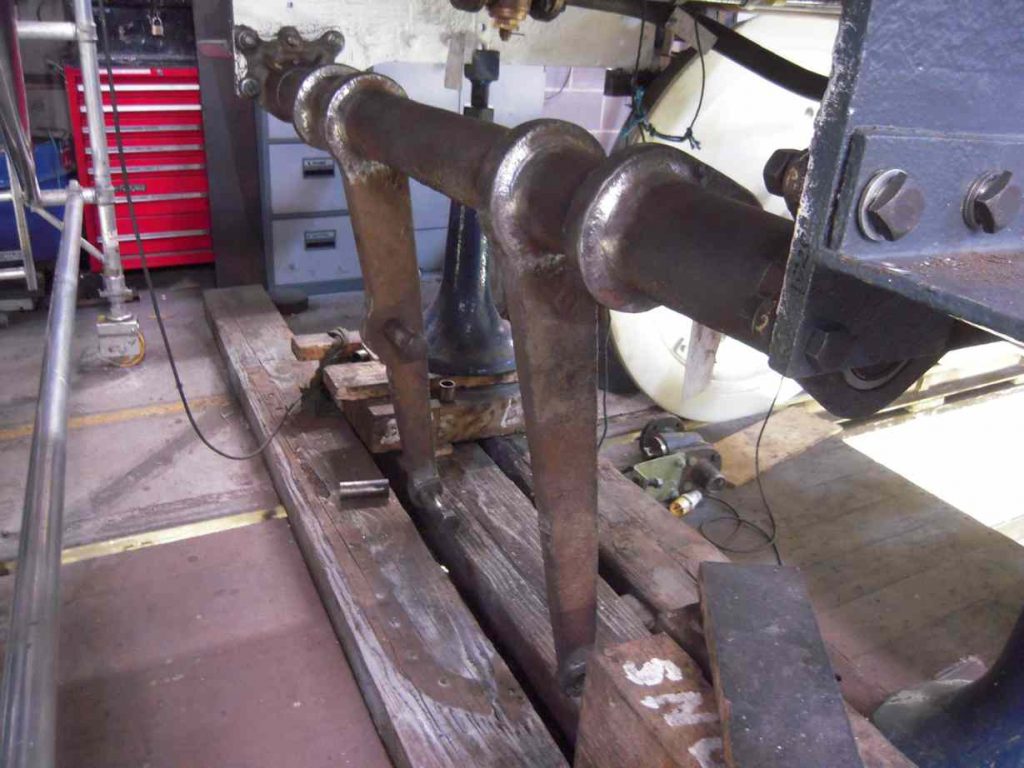
Work on the crank axle continues with the middle crank pin now finished with completion of the radius at the right hand end of the journal. A very skilful piece of work carried out by an Engineering Team volunteer on this critical component. The components for the return crank setting jig are now coming together with various parts being machined. Work has begun on fitting the reverser reach rod with the fitting of the rear section.
The leading crankpin caps have been fitted after the re-skimming the left leading. Both caps now have the BR-specified clearances. The sizing of the new slidebar bolts continues with the middle slidebars being worked on first. The machined and hardened motion pins for the outside gear have now been completed and collected from contractors.
The boiler was steam tested this week at Llangollen. Unfortunately the new steam heat valve leaked from the body casting so the test was stopped before the setting of the safety valves.
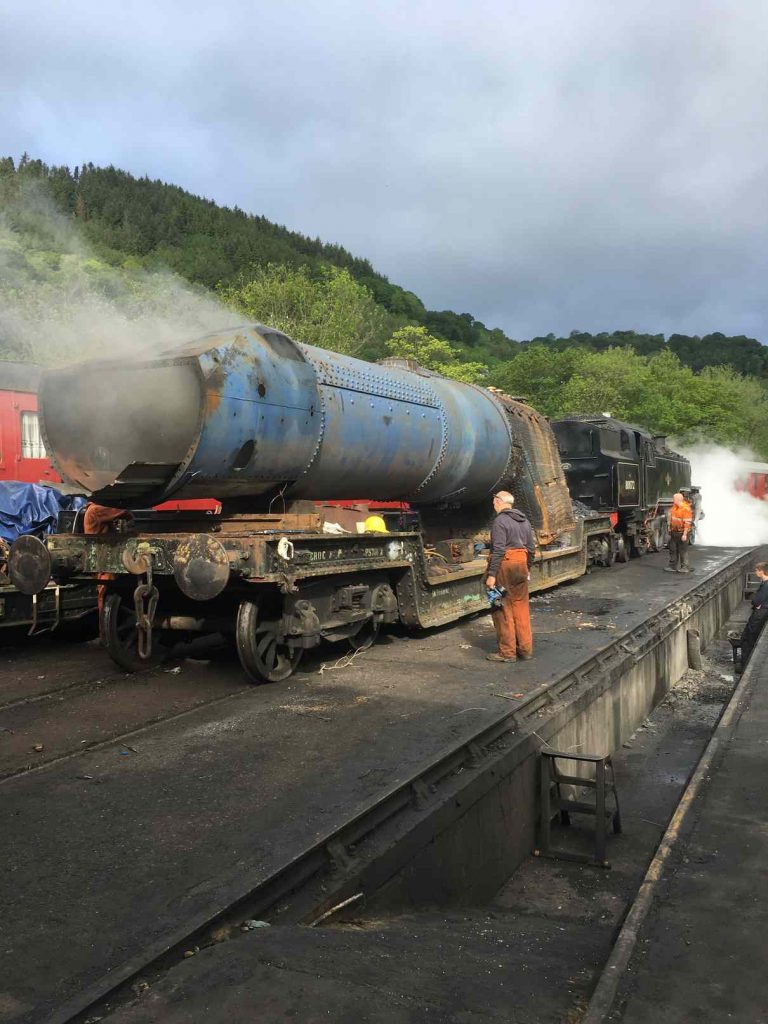

The testing of the boiler was successful and in particular the front tubeplate was dry as a bone which means that the installation of the superheater can begin.
The superheater header sealing kit was delivered to Llangollen by one of our volunteers in preparation for the hydraulic test of the superheater in situ, and clamps used to seal off the regulator have been sent to enable the hydraulic test of the main steam pipe.
This is the 40th update—you can read all the previous instalments here.